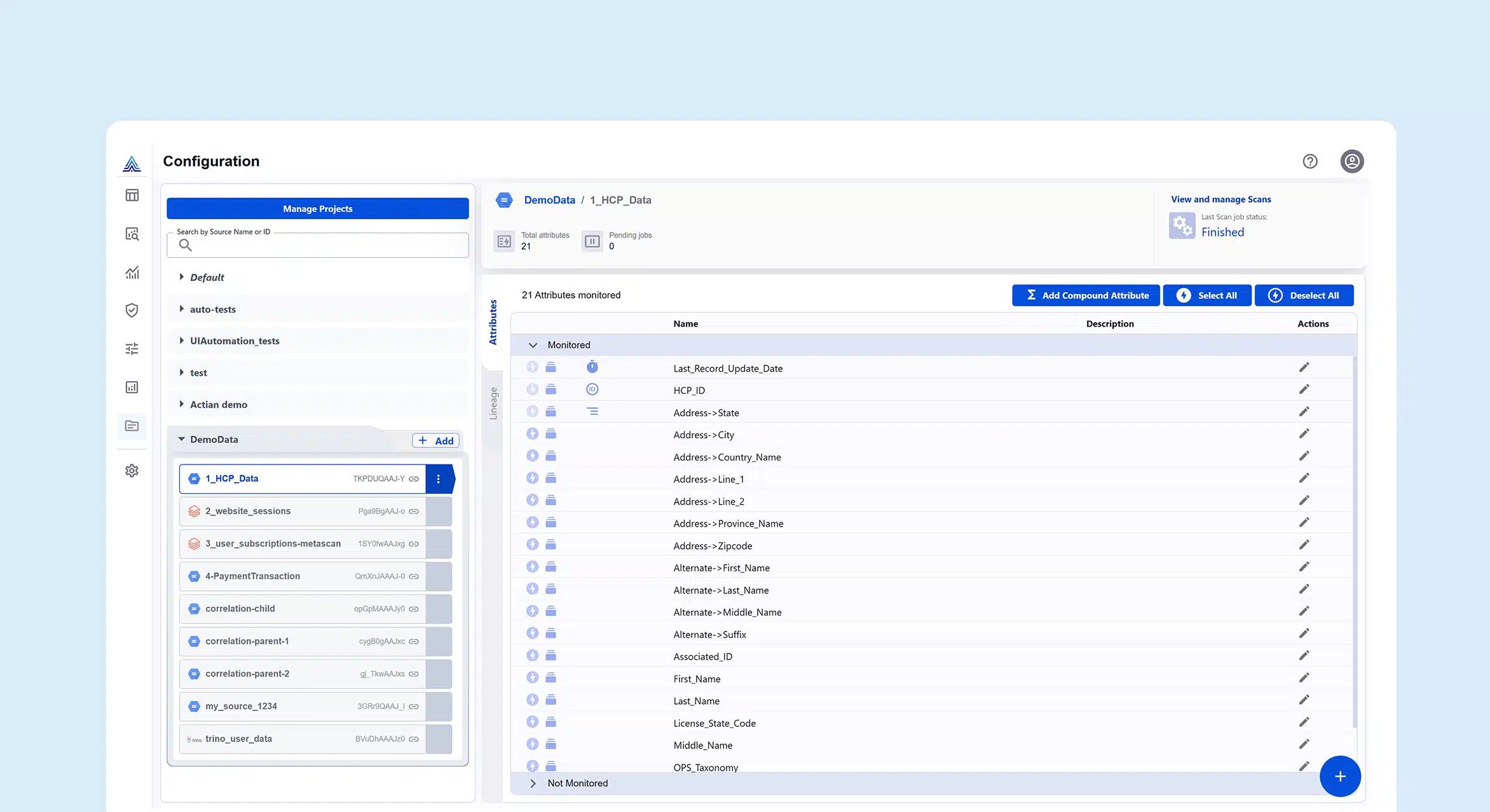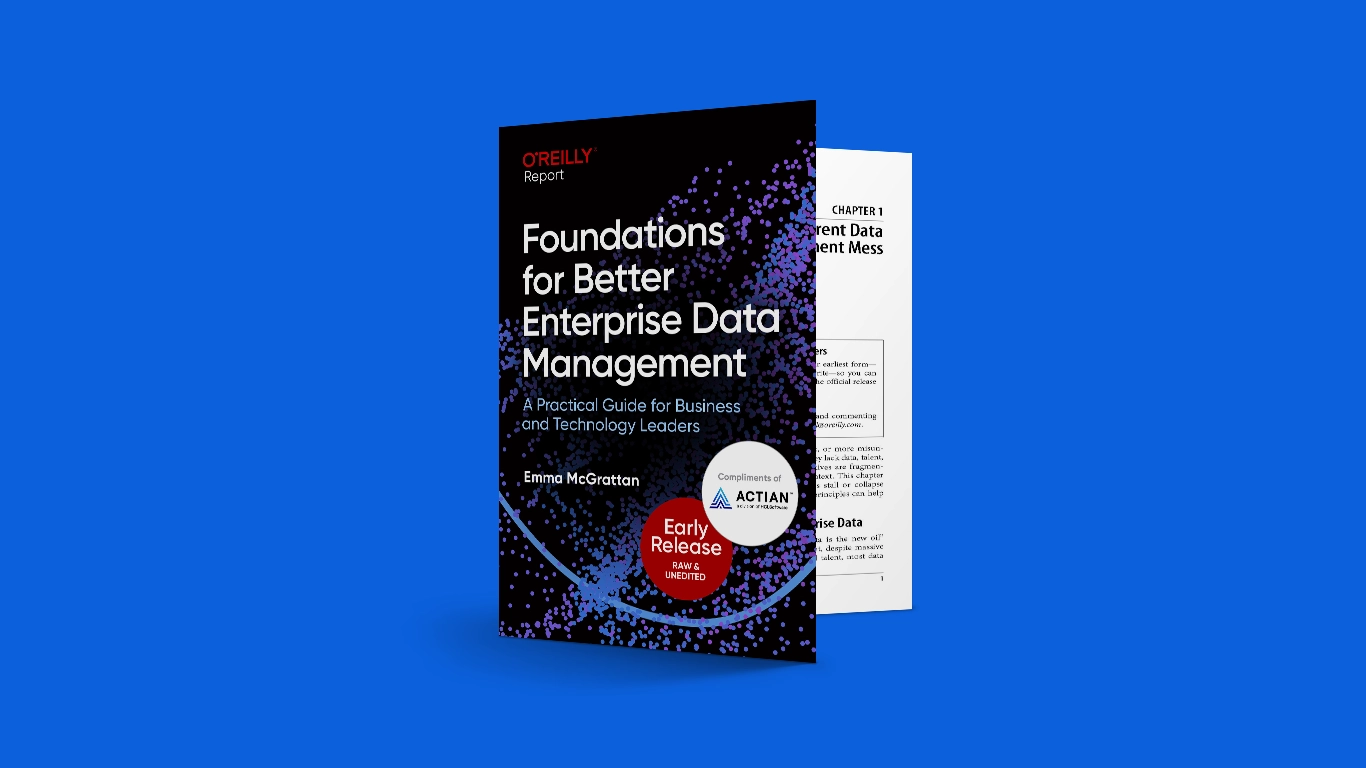10 Use Cases Show How Data Readiness Drives Agentic AI
Actian Corporation
October 20, 2025

Agentic AI doesn’t fail because of the models. It fails because the data feeding the models isn’t ready. The data lacks the quality, context, or accuracy needed to deliver trusted outcomes.
The pressing question for enterprises is “Can our AI agents or applications be trusted to deliver business value?” Over 40% of Agentic AI projects will be canceled by the end of 2027, due to escalating costs, unclear business value, or inadequate risk controls, according to Gartner, Inc.
The difference between success and stalled use cases comes down to data readiness. With the right foundation, organizations can benefit from Agentic AI that drives measurable results at scale.
To bring Agentic AI to life, organizations can activate their metadata by giving business context to enterprise data. With a Model Context Protocol (MCP) server, metadata becomes the connective tissue between data and AI. This gives, for example, AI agents the ability to securely understand and act on information across systems, adding context and trust to generate reliable, goal-oriented outcomes.
When metadata is activated in this way, data readiness moves from a technical goal to a strategic advantage. That’s where data readiness becomes a true differentiator. It enables organizations to activate their metadata and support intelligent capabilities that deliver tangible business outcomes. These 10 high-impact use cases show how data activation feeds Agentic AI to deliver sustainable business value:
Get the Infographic: 10 Use Cases for Agentic AI.
1. Drive Consistency With On-Demand Business Term Definitions
Business Challenge: The VP of Finance for a recently acquired division is preparing their first consolidated report. They encounter the term “Adjusted Net Capital Ratio,” a core corporate KPI with a highly specific calculation method. In their previous organization, a similar term meant something different. Using the incorrect definition could lead to material misstatements in financial reporting and result in weeks of rework.
Solution: Instead of scheduling multiple meetings to track down the definition, the VP asks their AI assistant, “What is the corporate-approved definition and calculation for ‘Adjusted Net Capital Ratio’?” Instantly, the AI assistant retrieves the authoritative definition from the central business glossary, including the precise formula, the data steward responsible for the metric, and a link to the official policy document.
Strategic Implications: This capability is crucial for post-merger integration, ensuring that acquired entities can rapidly align with corporate standards. At a global scale, it enforces a single, unambiguous business vocabulary, which is foundational for accurate regulatory reporting such as CCAR and BCBS 239, consistent global analytics, and the elimination of costly errors caused by misinterpretation.
2. Unlock Deeper Insights With Semantic Search
Business Challenge: A global supply chain analyst is tasked with identifying inefficiencies within the organization’s supply chain. They need to analyze “logistics performance,” but this concept is captured differently across various ERP systems and regional business units: as “carrier SLA adherence” in North America, “shipping efficiency” in APAC, and “outbound delivery success rate” in EMEA. A simple keyword search would miss these critical, related datasets.
Solution: The analyst asks AI, “Find all datasets related to logistics and shipping performance globally.” The Model-Context Protocol (MCP) server, powered by a knowledge graph, understands the semantic relationships between these disparate terms. It returns a comprehensive collection of relevant tables, reports, and dashboards from all regional systems, providing a complete picture for the first time.
Strategic Implications: Semantic search breaks down entrenched data silos that form naturally in large, federated organizations. It enables a true 360-degree view of complex business operations, from customer interactions to supply chain logistics. This capability is essential for identifying hidden risks, uncovering cross-functional optimization opportunities, and driving enterprise-wide strategic initiatives that depend on a holistic understanding of the business.
3. Accelerate Technology Modernization With Data Model Discovery
Business Challenge: An enterprise architecture team is planning the multi-year, multi-million-dollar decommissioning of a legacy mainframe ERP system to accelerate its cloud migration. Before it can migrate a single process, team members must understand the thousands of undocumented data dependencies that have accumulated over decades. A mistake could trigger an operational failure in a critical business system, such as an order processing system.
Solution: An architect asks AI, “Generate a complete data model for the Customer Master table, including all known upstream data sources and downstream consumers.” The AI queries the data catalog’s lineage graph and instantly produces a detailed relational map, highlighting critical dependencies that were previously unknown and providing a clear impact analysis for the migration plan.
Strategic Implications: This capability significantly reduces risk and accelerates major technology transformation initiatives. It reduces technical debt by making complex, legacy systems understandable, allowing for safer cloud migrations, faster application modernization, and more confident architectural planning. The time saved in manual discovery translates directly into lower project costs and faster realization of strategic goals.
4. Mitigate Risk by Locating Certified Data Assets
Business Challenge: A Chief Risk Officer (CRO) receives an urgent request from a federal regulator to provide the source data for a key metric in the latest CCAR stress test submission. The team must respond within 24 hours. Pulling data from a non-certified or outdated source could result in severe regulatory penalties and reputational damage.
Solution: The data lead on the CRO team asks their AI assistant, “Find the certified, regulator-approved dataset for Q3 market risk exposure.” The AI assistant immediately returns a single, prioritized result: the officially certified dataset. The response also includes metadata confirming its certification date and the name of the data steward who approved it, providing a complete and defensible audit trail.
Strategic Implications: This function moves data governance from a passive policy to an active, embedded control. For mission-critical processes like financial closing, regulatory filings, and risk modeling, it provides an unshakeable layer of trust and defensibility. It ensures that the most critical decisions in the company are based on accurate data, every time, thereby mitigating significant financial and regulatory risk.
5. Improve Collaboration by Identifying Data Owners
Business Challenge: A data privacy officer is executing an incident response plan for a potential data breach involving a customer marketing database. To comply with GDPR’s 72-hour notification rule, they must immediately identify the official business owner and technical steward of the dataset to assess the scope and initiate remediation. Wasting hours navigating internal directories could mean the difference between compliance and a multi-million euro fine.
Solution: The officer asks AI, “Who are the business owner and technical steward for the EU_CUST_MKTG_PROD database?” Instantly, AI returns the contact details for both individuals, their roles in the data governance council, and their designated backups, allowing the incident response team to engage the right people within minutes.
Strategic Implications: During a crisis, quick response and precise actions are crucial. This capability embeds resilience into the organization’s operating model by making accountability transparent and instantly accessible. It dramatically shortens the time-to-resolution for critical data incidents, from security breaches to quality failures, thereby reducing risk and reinforcing a culture of clear ownership across the enterprise.
6. Build Trust Through Transparent Data Lineage
Business Challenge: During a quarterly board meeting, the CEO questions a surprising spike in a key operational metric on the global sales dashboard. The Chief Data Officer, present in the meeting, is asked to validate the origin of the number. An inability to answer confidently could undermine trust in the entire data organization.
Solution: The CDO asks the AI assistant, “Show me the business lineage for the ‘Global New Recurring Revenue’ KPI on the executive dashboard.” Within seconds, the AI displays a high-level flowchart confirming that the data originates from the certified Salesforce and SAP data marts and was processed through the standard, audited ETL pipeline, with no anomalies detected. The CDO can then confidently explain the metric’s provenance to the board in real time.
Strategic Implications: This capability elevates data governance to the highest level of strategic importance. It offers C-suite executives instant, transparent proof of a metric’s source, building strong trust and promoting a genuine data-driven culture. The ability to validate critical business information with this speed and confidence is a powerful demonstration of a mature and reliable data ecosystem.
7. Make Confident Decisions With Real-Time Quality Scores
Business Challenge: A quantitative hedge fund’s automated trading algorithm is about to rebalance a multi-billion dollar portfolio based on incoming market data feeds from multiple global exchanges. A microsecond of data lag or a single corrupted feed could trigger a cascade of erroneous trades, leading to catastrophic financial losses. The system needs a final, automated go/no-go check.
Solution: As a final step in its execution logic, the automated trading system makes a programmatic call to the AI assistant: “Confirm data quality and latency for all constituent feeds of the ‘Global Risk Arbitrage’ model.” The AI assistant instantly validates that all feeds are operating within their prescribed quality thresholds, such as >99.9% accuracy, <50ms latency, and returns a “PROCEED” signal. If any feed was degraded, it would return a “HALT” signal, preventing the trade from proceeding.
Strategic Implications: This exemplifies the highest standard of operational risk management. For high-frequency, automated decision-making systems such as algorithmic trading, real-time supply chain logistics, and fraud detection, integrating these instant, programmatic quality checks is crucial. They act as a vital safeguard, preventing automated systems from executing disastrous decisions driven by inaccurate data.
8. Streamline Compliance and Audit Responses
Business Challenge: An internal audit team is preparing for an upcoming examination by a federal regulator, such as the Office of the Comptroller of the Currency (OCC). To prepare, the team must proactively validate that all data used in the bank’s BCBS 239 risk reporting frameworks are from certified sources and have complete, end-to-end lineage. This process has historically required a team of multiple resources to complete manually over several months.
Solution: The lead auditor asks AI a complex, multi-faceted question: “List all data assets used by the BCBS 239 models. For each, confirm its certification status, show its business lineage, and list its data steward.” AI queries the knowledge graph and generates a comprehensive, audit-ready report in minutes, identifying two datasets that have expired certifications.
Strategic Implications: This capability transforms audit preparation from a reactive, labor-intensive fire drill into a proactive, continuous compliance process. It dramatically reduces the cost and time associated with audits. Still, more importantly, it reduces the risk of receiving negative regulatory findings, which can result in severe financial penalties and reputational damage. This demonstrates a state-of-the-art, proactive compliance posture.
9. Accelerate Onboarding and Time-to-Value
Business Challenge: A Fortune 100 pharmaceutical company acquires a biotech firm to accelerate its drug discovery pipeline. It needs to onboard 50 highly specialized data scientists and integrate them into the parent company’s vast and complex clinical trial data ecosystem. A prolonged onboarding process might delay essential research and put at risk the expected benefits of the multi-billion-dollar deal acquisition.
Solution: As part of the integration plan, the CDO’s office creates role-based “AI Welcome Kits.” A new clinical data scientist can ask, “What are the essential data assets for oncology research?” They instantly receive a curated package including links to the core genomic databases, certified clinical trial result sets, key data glossaries, and contact information for the lead data stewards in their domain.
Strategic Implications: This capability is a direct enabler of M&A success. By radically accelerating the time-to-productivity for specialized, high-value talent from acquired companies, the organization can achieve the strategic financial and scientific goals of the acquisition faster. At scale, this becomes a significant competitive advantage in a market where the war for talent is fierce.
10. Reduce Clutter and Cost by Identifying Redundant Data
Business Challenge: As part of an enterprise-wide efficiency initiative, a CDO is tasked with reducing sprawling multi-cloud spend by $10 million annually. They hypothesize that decades of decentralized operations have resulted in massive data redundancy across AWS, Azure, and Google Cloud; however, they lack the tools to systematically identify and prove this redundancy across these environments.
Solution: An enterprise architect uses AI to execute strategic queries, such as: “Show me all datasets across all cloud providers with more than 1TB of storage that have not been accessed in the last 180 days and have a greater than 90% schema similarity to a certified enterprise asset.” AI returns a prioritized list of high-confidence candidates for decommissioning, complete with storage costs and the contact information of the relevant data owners.
Strategic Implications: This capability has a direct and measurable impact on the bottom line. It delivers the evidence-based intelligence required to execute strategic data decommissioning and consolidation projects, leading to significant reductions in cloud storage and compute costs. Beyond cost savings, it mitigates security risks by reducing the enterprise’s data footprint and simplifying compliance burdens by streamlining the governance of sensitive data.
Agentic AI Comes Alive When Data is Activated
The takeaway is clear. Agentic AI success isn’t about chasing the newest model. It’s about preparing data to work intelligently, securely, and at scale. From reducing audit preparation time to eliminating redundant cloud costs, the business value of Agentic AI becomes apparent only when enterprises invest in a governed, activated data foundation.
Organizations that leverage Agentic AI transform their metadata into a dynamic, operational foundation that drives consistency, transparency, and automation throughout the enterprise.
Now is the time to ask, “Is our enterprise truly AI-ready?” Get a copy of the eBook “The Enterprise Guide to Agentic AI Readiness” to chart a path to Agentic AI success.
Subscribe to the Actian Blog
Subscribe to Actian’s blog to get data insights delivered right to you.
- Stay in the know – Get the latest in data analytics pushed directly to your inbox.
- Never miss a post – You’ll receive automatic email updates to let you know when new posts are live.
- It’s all up to you – Change your delivery preferences to suit your needs.
Subscribe
(i.e. sales@..., support@...)




